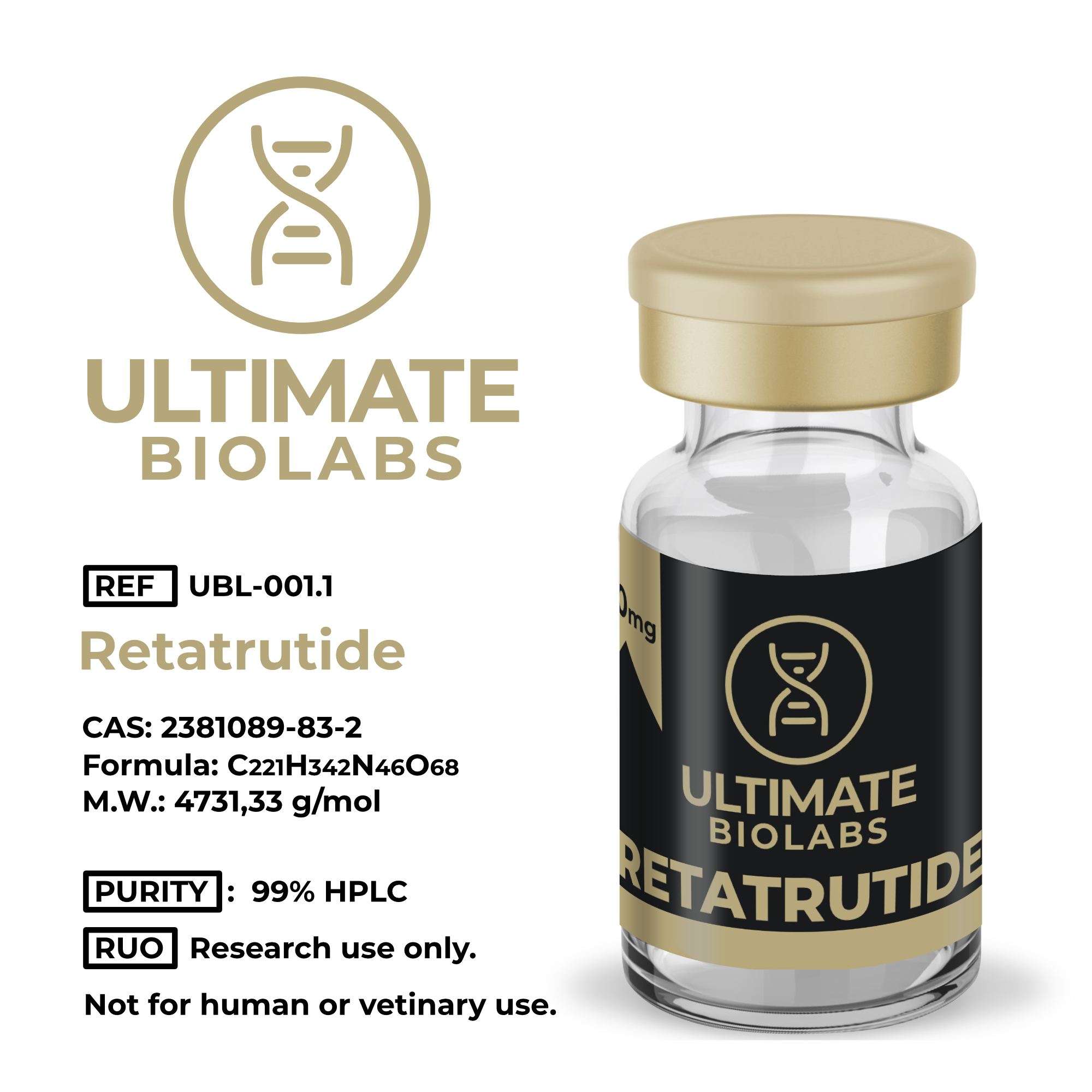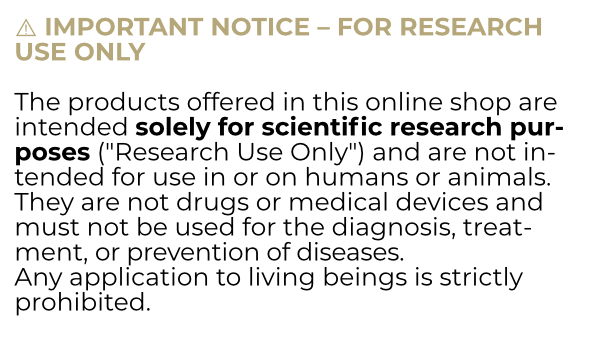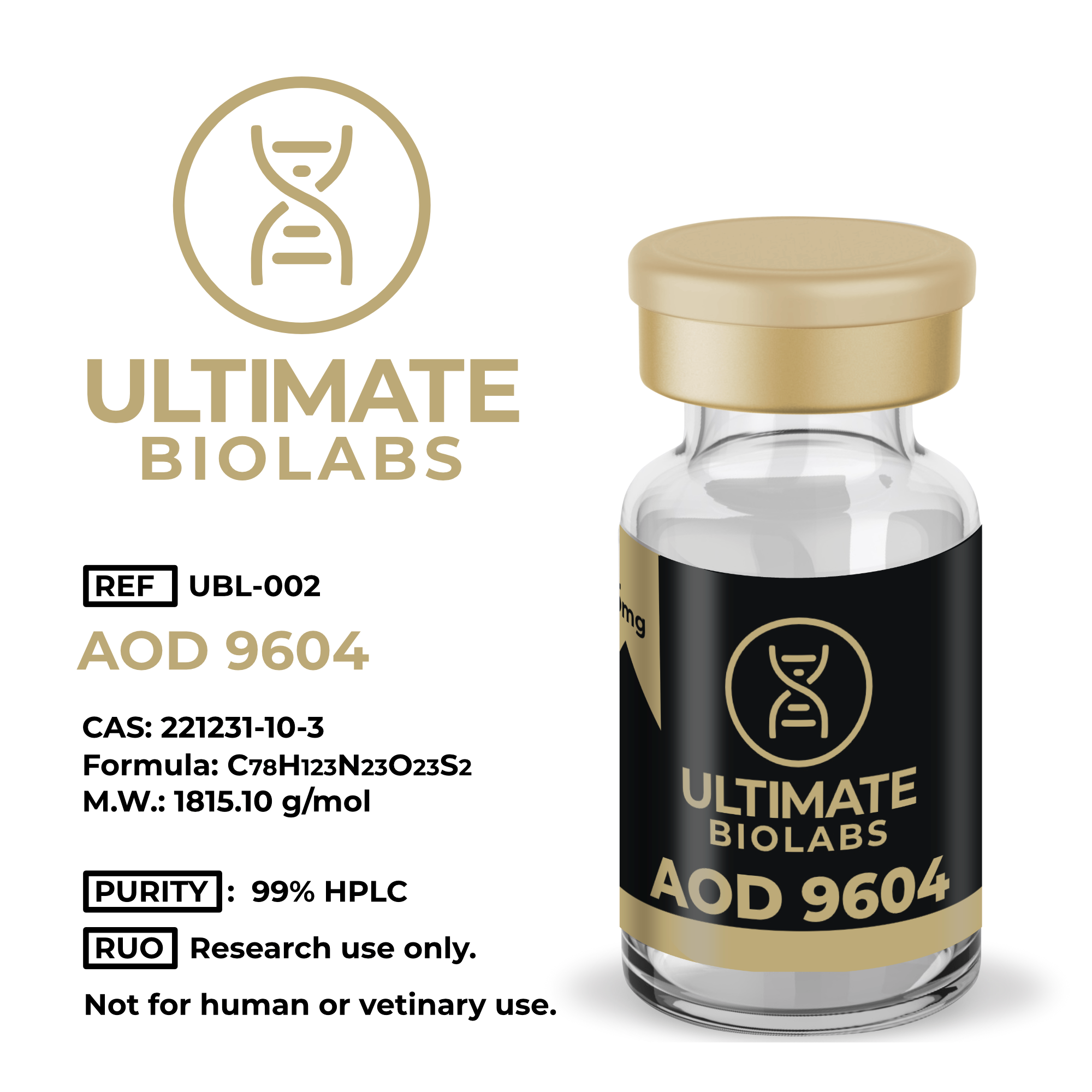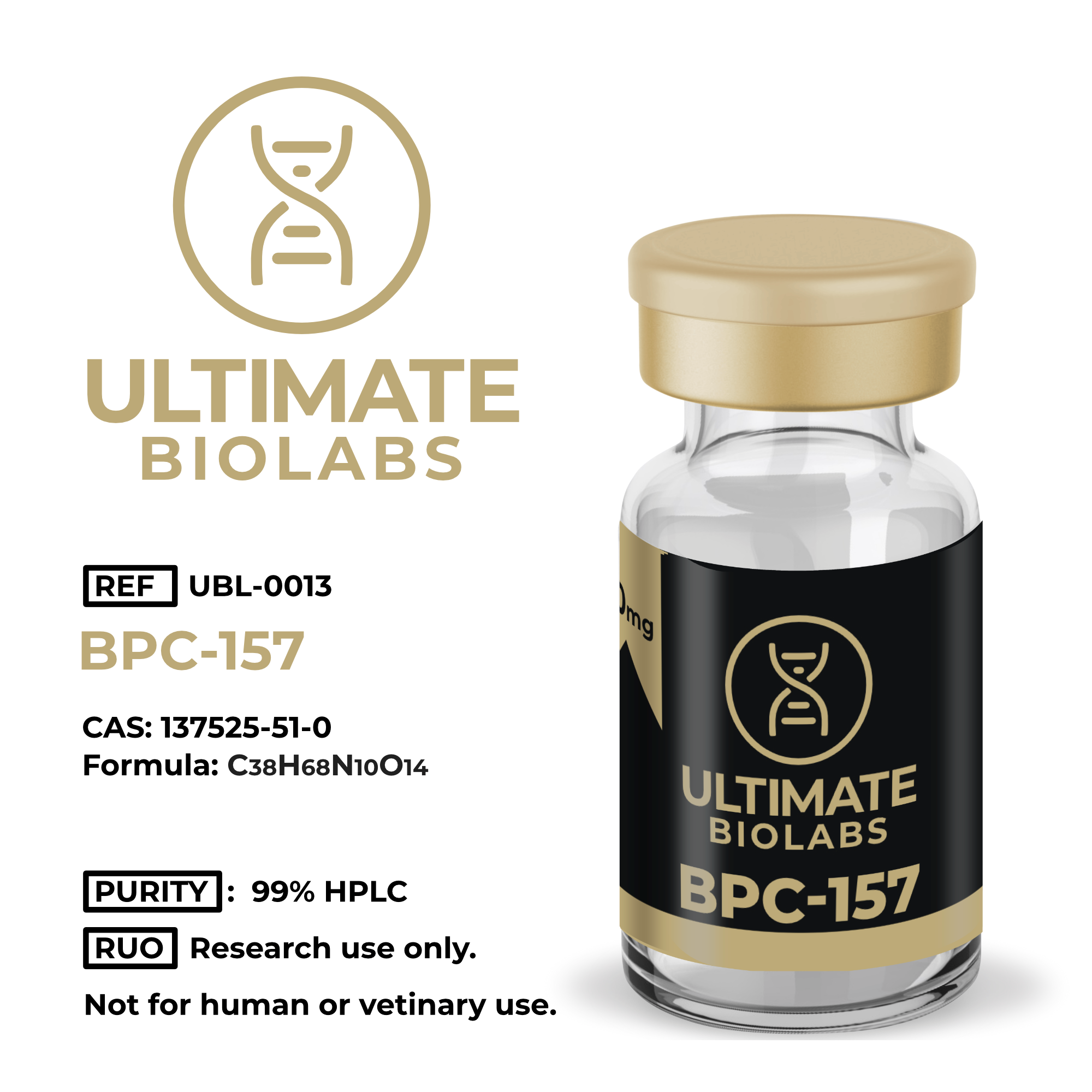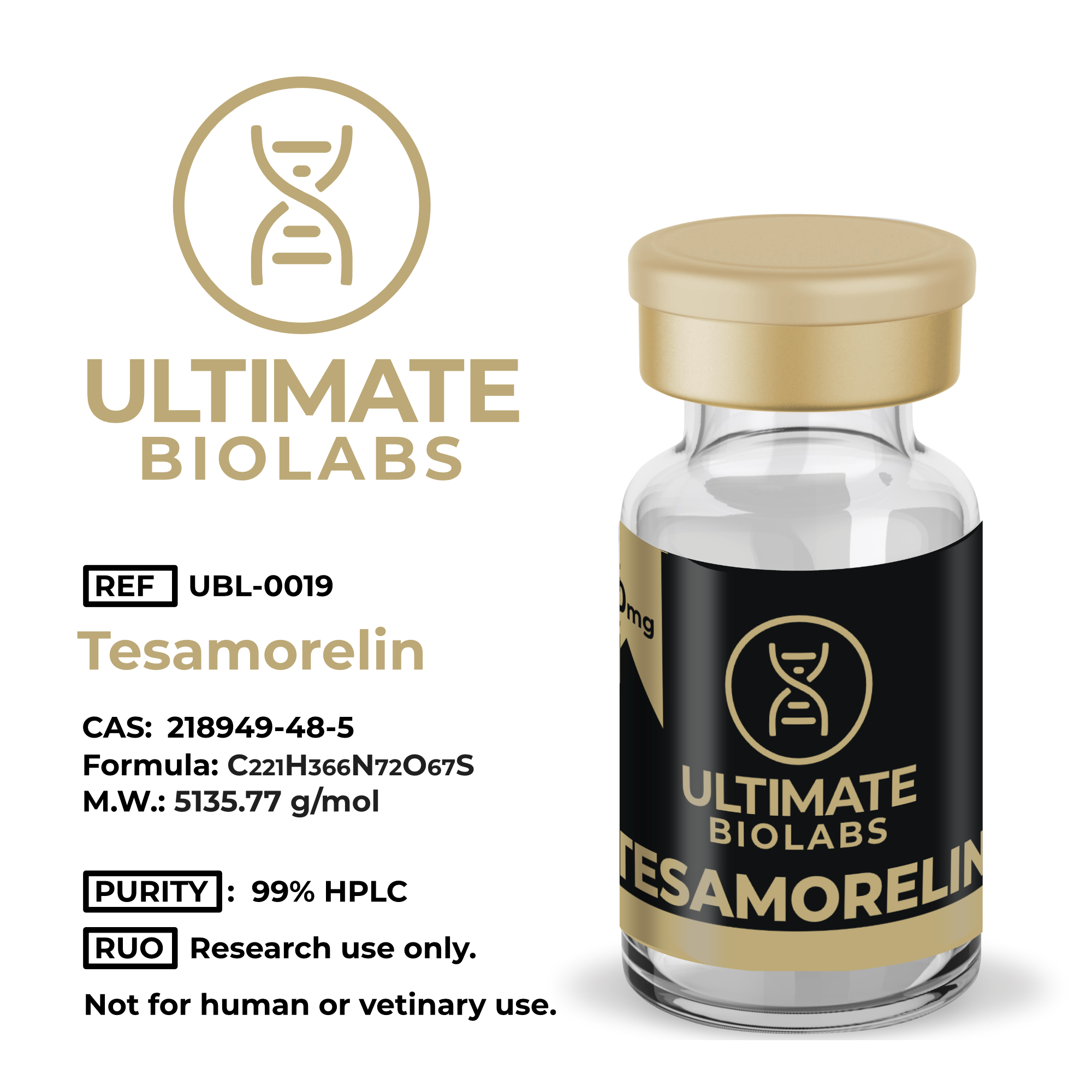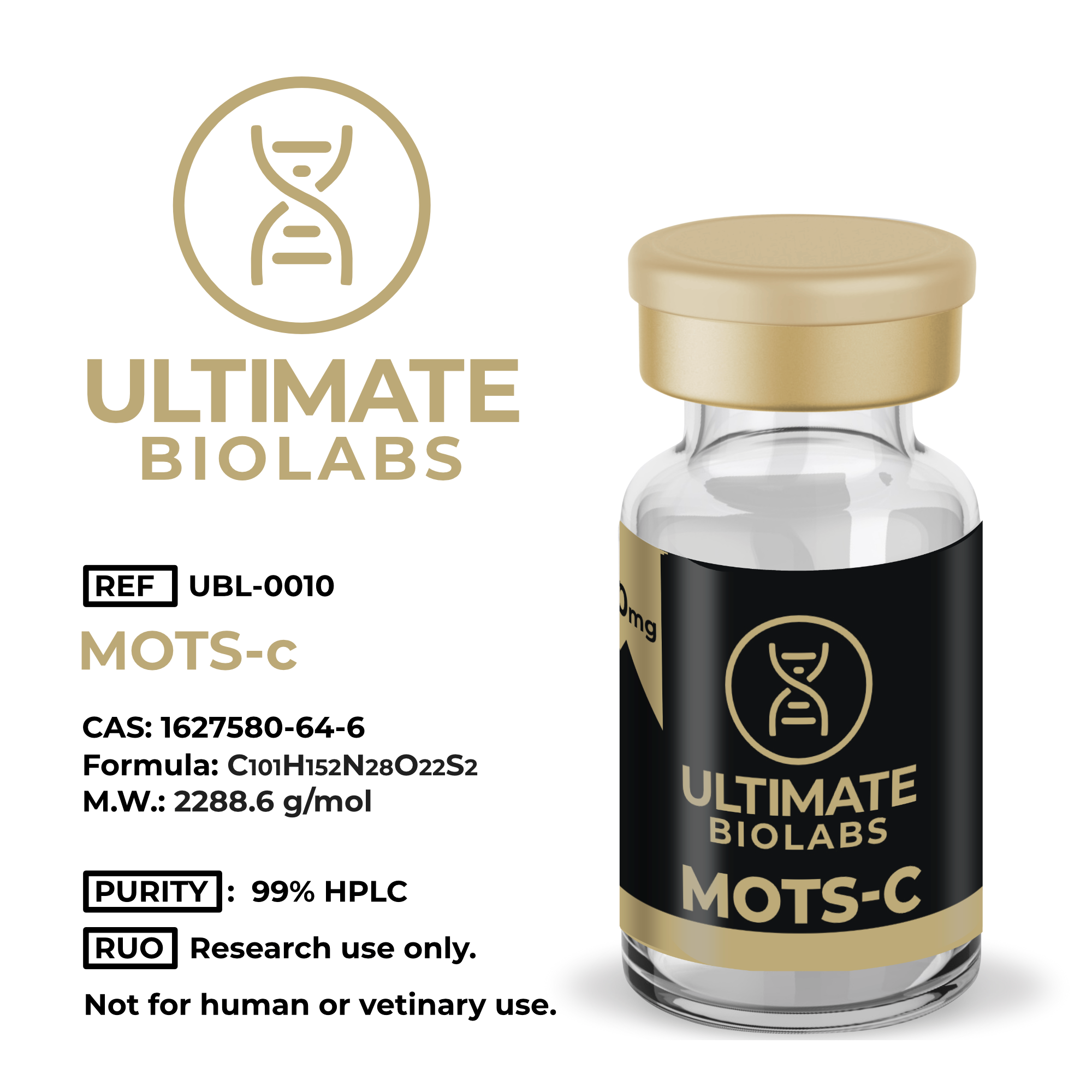Retatrutide
- 🔬 Tested laboratory quality
- 💎 >99% purity
- 🚚 Fast & secure shipping
Retatrutide
Triple Agonist Peptide for Advanced Metabolic Research
Retatrutide is an innovative, multifunctional research peptide acting as a triple agonist on three key metabolic receptors: the GLP-1 (Glucagon-Like Peptide-1), GIP (Glucose-Dependent Insulinotropic Polypeptide), and Glucagon Receptor (GCGR). This unique receptor combination makes Retatrutide one of the most exciting compounds in modern metabolic and endocrine research.
Retatrutide – Properties, Mechanism of Action & Scientific Data
As the first compound featuring a triple-receptor agonism, Retatrutide has demonstrated remarkable potential in Phase II clinical studies (New England Journal of Medicine 2023, Lancet 2023):
- Up to 24.2 % body-weight reduction after 48 weeks
- 83 % of participants lost ≥ 15 % of their body weight
- HbA1c improvement by up to –2.02 %
- Liver-fat reduction by up to 82 %
- Triglyceride reduction (–35 %) and non-HDL cholesterol (–20 %)
These findings indicate that Retatrutide simultaneously enhances energy expenditure, stimulates fat oxidation, and promotes balanced glucose and lipid metabolism.
Mechanistic Insights
- GLP-1 Receptor: Activates hypothalamic satiety pathways, reduces food intake, delays gastric emptying and stimulates insulin secretion.
- GIP Receptor: Promotes glucose-dependent insulin release without hypoglycemia risk; triggers “browning” of white adipose tissue → higher energy output.
- Glucagon Receptor (GCGR): Suppresses hepatic gluconeogenesis, enhances lipolysis and fatty-acid oxidation → reduced body fat and improved glycemic stability.
Moreover, Retatrutide has been shown to decrease expression of the ANGPTL3/8 complex – a natural inhibitor of lipoprotein lipase – thus supporting lipid clearance and improving cardiometabolic profiles.
Retatrutide in Liver and Diabetes Research
Retatrutide shows promising effects in studies on Type 2 Diabetes and non-alcoholic fatty liver disease (NAFLD / NASH):
- Improved liver parameters via suppression of inflammatory cytokines (TNF-α, IL-6)
- Activation of PPAR signaling → enhanced β-oxidation and hepatic fat catabolism
- Increased insulin sensitivity through Akt pathway activation
- Anti-inflammatory modulation of Kupffer cells → reduced hepatic inflammation and fibrosis risk
Molecular Data
- CAS Number: 2381089-83-2
- PubChem CID: 171390338
- Molecular Formula: C221H342N46O68
- Molecular Weight: 4731 g/mol
- Synonym: GTPL-13769
- Sequence: His-d-2Nal-Asp-Phe-Ile-His-Trp-Lys-Thr-Asp-Phe-Ser-Arg-Tyr-Arg-Lys-Val-Leu-Gly-Gly-Ala-Arg-Ala-Arg-Leu-Leu-Glu-His-Ser-Glu-Gln-Lys-Lys-His-Asn-Phe-Val-Gly-Trp-Met-Asp-Arg-Phe-Phe-Tyr-Pro-Arg-Lys-Thr-Pro-Gly-Thr-Ser-Phe-Tyr-Pro-Glu-Thr-Phe-Thr-Phe-Lys-Asn-Leu-Glu-Trp-Leu-Lys-His-Ser-Asn-Leu-Asn-Ser
Formulation & Quality
Ultimate Biolabs provides Retatrutide as a lyophilized (powder) form to ensure maximum stability, purity and shelf life. Freeze-drying preserves molecular integrity so the compound maintains its quality even during extended storage. Each batch is produced under laboratory conditions and undergoes rigorous quality control.
Intended Use
Retatrutide 30 mg is intended for research and in vitro use only – not for human or animal consumption. Ideal for scientific studies in:
- Peptide and metabolic research
- Endocrinology and diabetes modeling
- Obesity and energy metabolism analysis
- Liver and cell metabolism research
⚠️ For Research Use Only – Not for human or animal consumption.
Login

